Introduction
3D printed food technology is a groundbreaking innovation that reshapes the culinary landscape by using 3D printing to create unique and personalized food products. In this article, we delve into the history, development, and the transformative impact of 3D printed edible food technology.
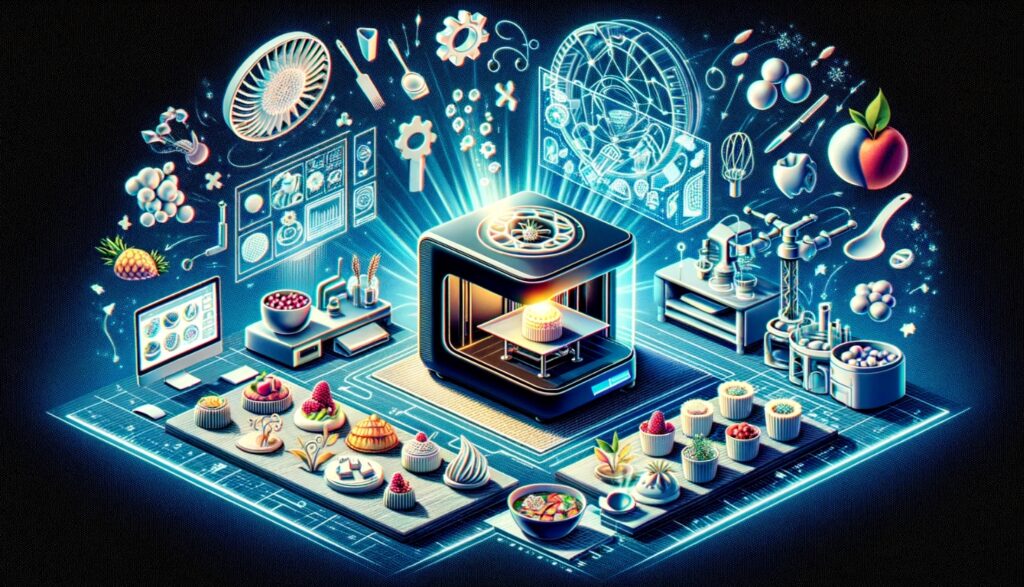
A Journey Through History
A glimpse into the historical evolution of 3D printed food, from early experiments to modern innovations, reveals a revolution in food preparation and presentation. Understanding this journey is key to appreciating the significance and promise of this cutting-edge culinary approach.
How 3D Food Printing Works
Understanding the principles of 3D printing applied to food reveals a fascinating process that transforms raw materials into three-dimensional edible objects. Delving into the basic methods of 3D food printing showcases diverse techniques, offering unique opportunities for culinary creativity and food customization.
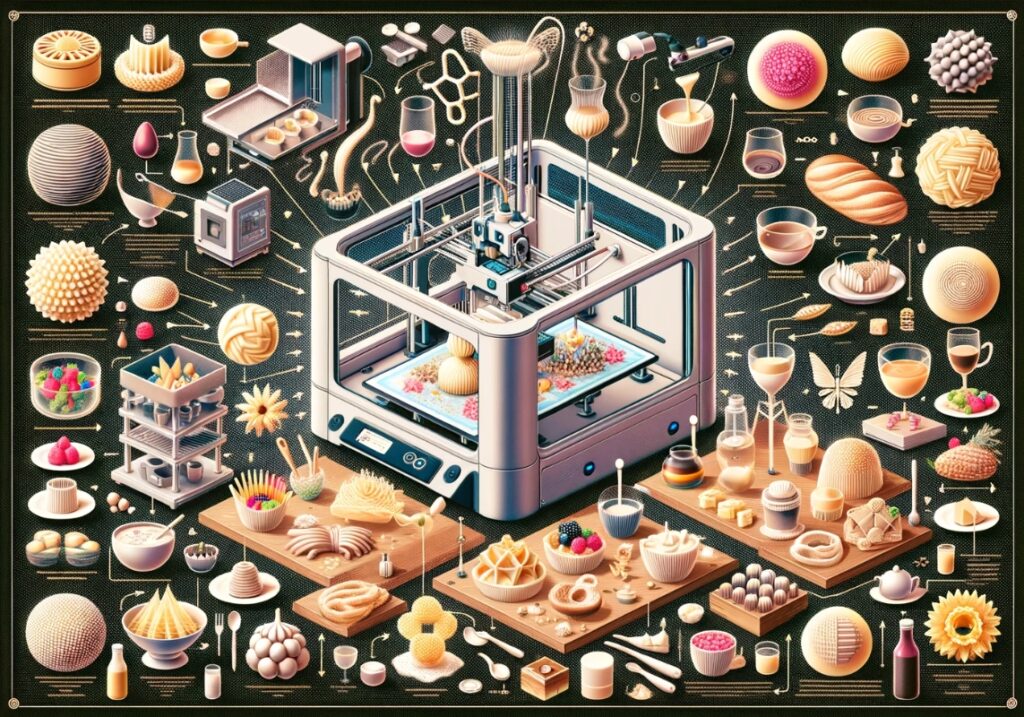
From Paste to Precision: Basic Methods of 3D Food Printing
Exploring extrusion, stereolithography, and advanced technologies like Selective Laser Sintering (SLS) opens up a world of possibilities for chefs and culinary enthusiasts. These methods not only enhance production efficiency but also provide avenues for creating visually stunning and innovative dishes using 3D printed food.
3D Printing Materials for the Food Industry
3D printed food introduces a palette of materials, converting them into culinary masterpieces. Examining promising materials and ensuring their safety and compatibility with food standards is crucial.
Crafting Culinary Wonders: Materials and Safety in 3D Printed Food
Promising materials such as chocolate, dough, and innovative blends, including cell-based bioprinting, offer new dimensions to culinary exploration. Ensuring the safety and compatibility of these materials is imperative, considering their impact on both taste and consumer experience with 3D printed food.

Benefits of 3D Food Printing
Explore the advantages that 3D printed food brings to the table, from personalized meals to resource efficiency and expanded opportunities for culinary art.
Culinary Customization: A Personal Touch to Every Dish
Discover how 3D printed food allows for individualized and personalized meals, catering to specific preferences, restrictions, and dietary requirements. This customization not only delights consumers but also empowers culinary professionals.

Efficiency Redefined: Saving Time and Resources
In the world of catering and restaurants, 3D printed food optimizes meal production, reducing complex processes and enhancing operational efficiency. The potential time and resource savings are invaluable to the industry.
Culinary Art Unleashed: Designing the Future of Food
Witness the transformative impact of 3D printed food on culinary art. Chefs can now experiment with shapes, textures, and artistic presentations, elevating the dining experience to unprecedented levels with 3D printed food.
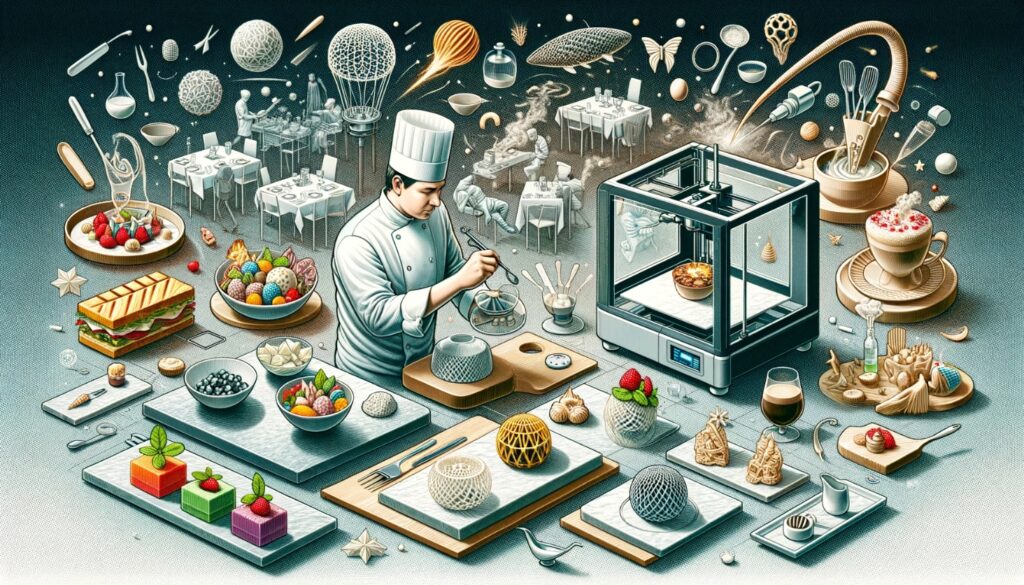
Challenges and Limitations of 3D Food Printing
Despite its potential benefits, 3D printed food encounters challenges requiring attention, including technical research and preserving the authentic flavors and textures of food.
Precision Matters: Technical Challenges in 3D Printed Food
Addressing issues of accuracy, new materials, and faster printers is essential. Ongoing technical research is crucial to overcoming challenges and unlocking the full potential of 3D printed food.
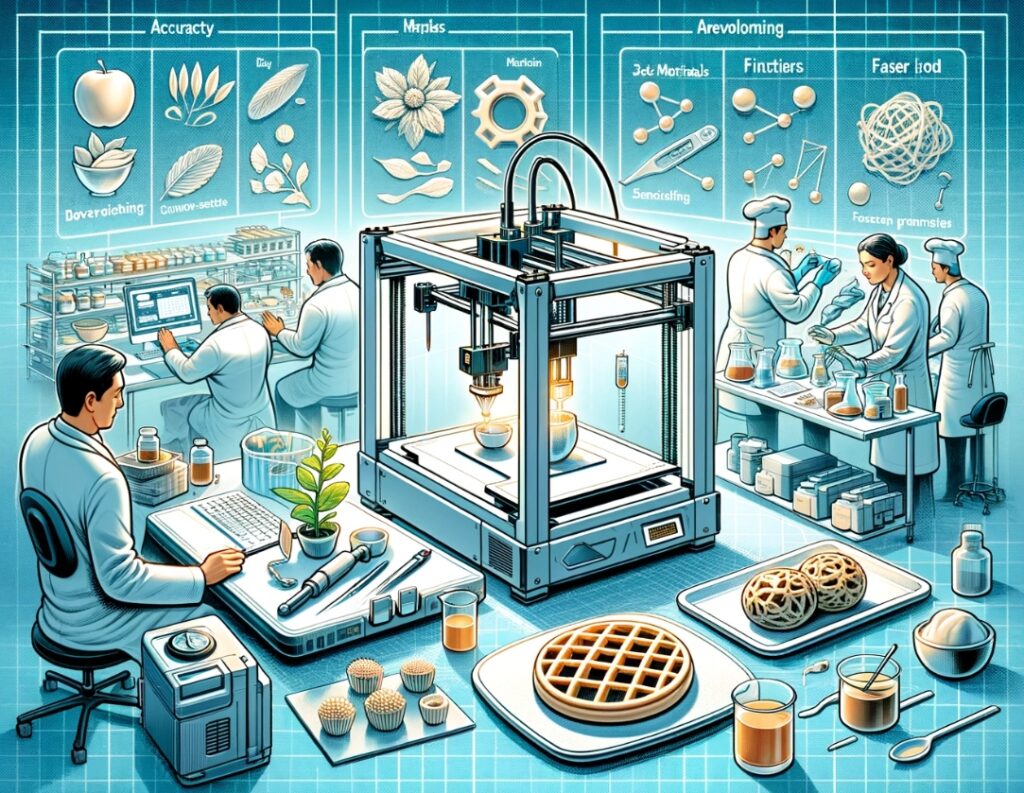
Taste and Texture: Balancing Innovation and Authenticity
Maintaining the authentic taste and texture of food poses a challenge. Ongoing research in gastronomy and food technology aims to develop methods preserving the genuine qualities of dishes created through 3D printed food.
Application of 3D Printing in the Food Industry
Explore how 3D printed food is transforming the food industry, influencing restaurants, culinary arts, and mass food production.
Culinary Masterpieces: 3D Printing in Restaurants and Culinary Arts
Restaurants leverage 3D printed food to create visually stunning dishes, showcasing culinary innovation. From unique decor elements to complex compositions, this technology enhances creativity and uniqueness in culinary offerings.
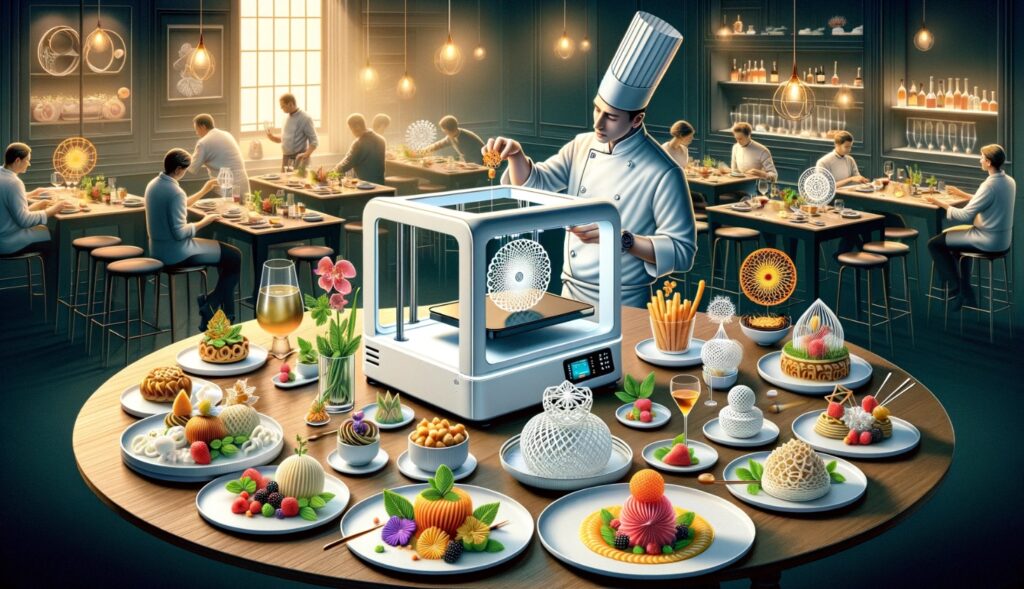
Streamlining Mass Production: The Potential Impact on Food Manufacturing
Beyond restaurants, 3D printed food has the potential to streamline mass food production. Efficient printers can simplify packaging, improve quality standards, and even cater to individualized consumer preferences, reducing waste and increasing sustainability.
The Future of Technology
The future of 3D printed food technology promises continued growth and impact on food preparation, presentation, and consumption.
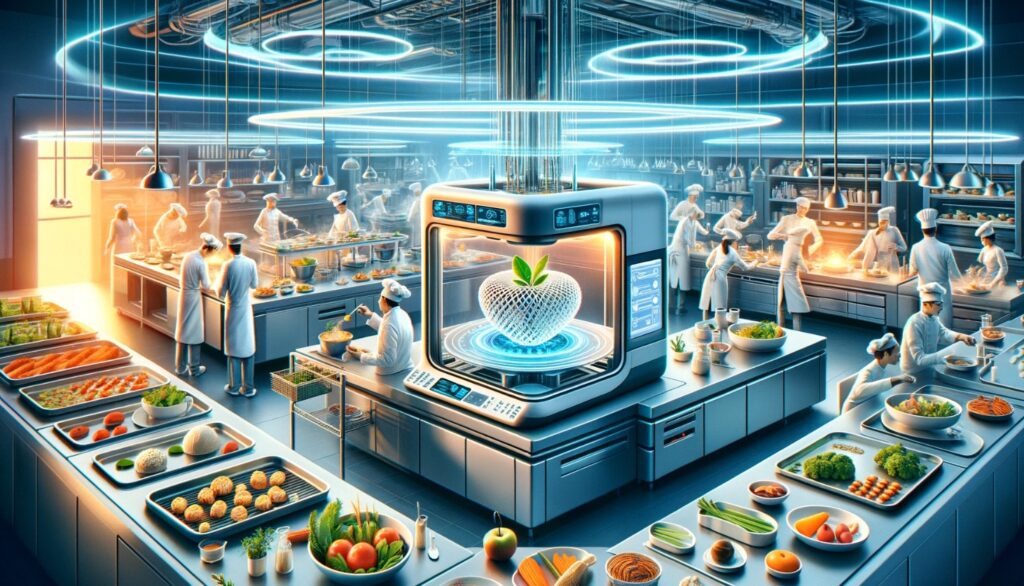
A Visionary Outlook: Predictions for 3D Printed Food
Explore predictions for the future, including advancements in materials, printers, and bioprinting techniques. The technology’s widespread adoption across various sectors, from retail to home cooking, is anticipated.
Transformative Impact: 3D Printing’s Influence on Food Culture
Witness how 3D printed food will not only change food preparation but also impact catering and food consumption culture. Personalized meals, culinary shows, and innovative concepts will become commonplace, influencing food perception and shaping new industry trends.
Ethical and Sociocultural Considerations
The integration of 3D printed food raises ethical and sociocultural questions that demand careful examination.
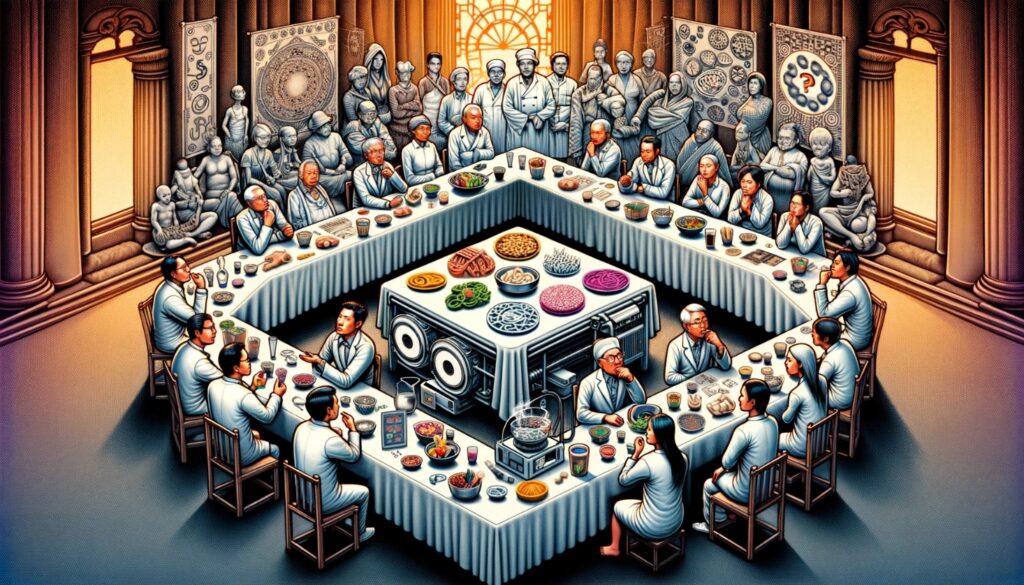
Navigating Ethical Dilemmas: Addressing Concerns in 3D Printed Food
Delve into ethical concerns surrounding safety, bioprinting, and potential impacts on employment in the gastronomy industry. Ensuring technology accessibility and equitable distribution are key aspects requiring ethical regulation and discussion.
Redefining Culinary Traditions: Sociocultural Impacts of 3D Printing
Explore how 3D printed food may redefine culinary traditions and cultural practices. Balancing innovation with the preservation of cultural heritage requires thoughtful consideration and societal adaptation.

Conclusion
In conclusion, 3D printed food technology marks a revolutionary shift in the culinary world. This article has navigated through its definition, workings, materials, benefits, challenges, applications, and future prospects. While offering creative tools and culinary customization, 3D printed food also presents a challenge, necessitating a delicate balance between innovation and culinary values. The future hinges on rigorous research, societal acceptance, and a judicious approach to its integration across various aspects of life.
